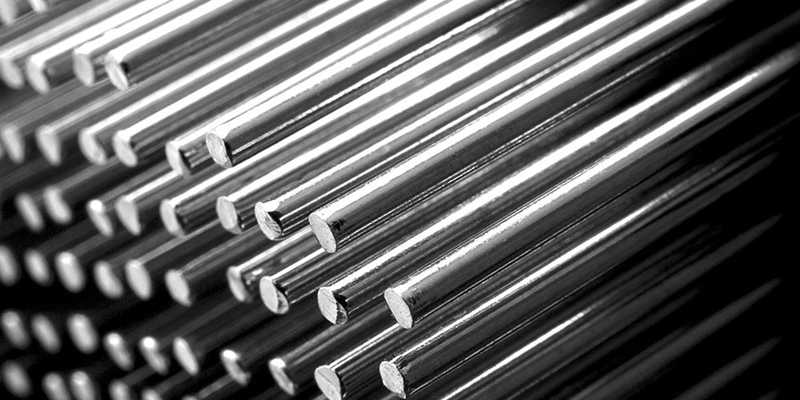- October 28, 2022
Tool steel is an alloy of carbon that manufacturers use for various purposes including machining and cutting. Their distinctive properties, including hardness, resistance to abrasion, and deformation, make them suited for shaping other materials through cutting and machining.
So, what is tool steel? What are the properties of tool steel? How is it different from stainless steel? What are the different grades of tool steel? How do you choose the ideal grade for your machining purposes?
Read on as we provide answers to these questions with an in-depth understanding of tool steel.
What is Tool Steel?
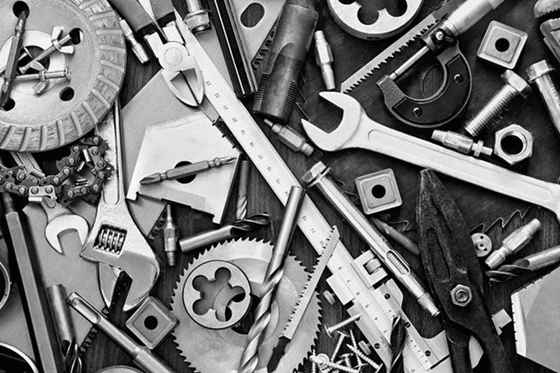
Unlike mild steel, tool steels have densely packed metal lattices with carbon and metal parts. They also contain elements that form carbides, such as Molybdenum, Chromium, Vanadium, and Tungsten. Besides, their ability to resist softening while performing excellently at high temperatures is due to the presence of nickel and cobalt.
The carbide content of tool steel makes it an exceptionally tough carbon alloy that is wear-resistant and hard. Besides, their chemical and physical properties make them ideal for doing tough jobs such as punching, cutting, drilling, and grinding. It also makes them suitable for manufacturing tools such as hand tools and machine dies.
Now, let’s examine its classification and applications.
Classifications of Tool Steel and Their Applications
There are six different categories of tooling steel including; cold-work, water-hardened, hot-work, high-speed, shock-resisting, and special purpose tool steels. Below are the classifications of tool steel and their application.
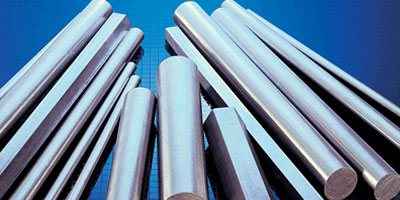
1. Cold-Work Tool Steel
This is one of the major types of tool steel. It is tough, hard, and wear-resistant in cold environments with temperatures below 200ºC. However, cold-work tool steel does not perform well when exposed to hot environments.
Besides, cold-work steel has high machinability. This is due to the presence of graphite and the lubrication it provides. What’s more, the most commonly used tool steel grades in this category include; D2, O2, A2, D3, and D6.
These are the different subcategories of cold work tool steel.
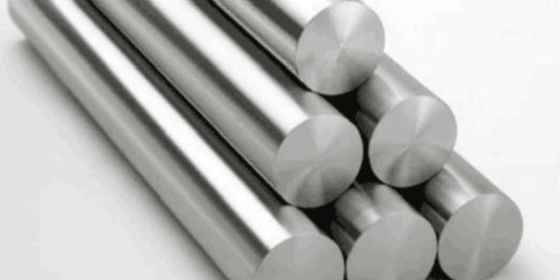
1.1 High Carbon Chromium or D Series Grade Tool Steel
This cold-working tool steel is also known as stainless due to its high chromium content and contains 11-13% chromium. Although they have limited corrosion resistance, their 1.4-2.5% carbon content gives them a high abrasion resistance. It also enables them to function at temperatures as high as 425ºC.
Besides, their ability to undergo oil or air quenching with minimal distortion gives this tool steel application in making cutters. It also makes the D series tool steel ideal for making seaming and forming rolls, plastic injection molds, lathe centers, and woodworking knives. Its other applications include making burnishing tools, lamination dies, draw punches, as well as cold extrusion, dies.
1.2 Air Hardening or A Series Grade Tool Steel
These types of tool steel have a carbon content of 0.05-2.85% and up to 5% chromium content. Furthermore, this grade of tool steel is very tough with high wear resistance. Common applications include coining, embossing, blanking, and blending dies.
1.3 Oil Hardening or O Series Grade Tool Steel
Quenched by oil during production, this series of tool steel has a carbon content ranging between 0.85-2.00%. They are also tough with have high abrasion resistance. The applications of Oil hardening tool steels include making bushings, collets, gauges, master engraving rolls, punches, and chasers for thread cutting.
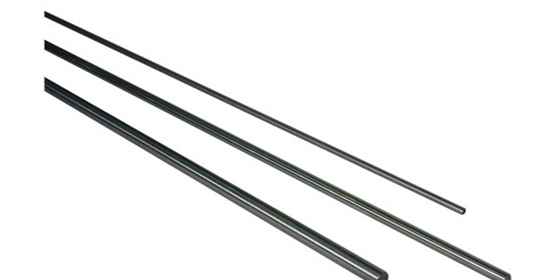
2. Water-Hardened Tool Steel
This category of tool steel contains heat-treated carbon steel. Produced at low-cost and water-quenched, water-hardened tool steel has a carbon content ranging between 0.5-1-5%. The high carbon content of water-hardened steel makes them brittle and hard. However, it is low on other alloying metals like tungsten, nickel, or molybdenum, usually less than 0.5%.
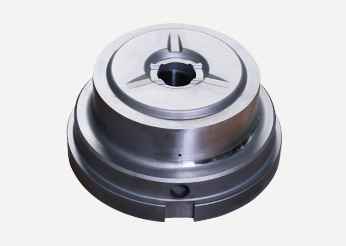
3. Hot Work Tool Steel
The types of tool steel in this category usually have a carbon content of less than 0.6%. However, they contain a greater percentage of other alloying elements. This enables them to keep their characteristics and work optimally even at extreme temperatures up to 540ºC due to the creation of more carbides.
The high-temperature resistance of hot work tool steel makes it ideal for use in manufacturing materials like metal and glass that require high temperatures for optimal malleability.
Additionally, one benefit engineers derive from using tool steel under this category is their continued functionality, even after exposure to extended heat. The most commonly used tool steel in this category is the H13.
Based on the percentage of alloying elements used, there are three main alloy elements in this category: molybdenum, and chromium.
3.1 Molybdenum-type Tool Steel
This is a hot work tool steel that has a high molybdenum content. Furthermore, this type of tool steel has high wear resistance and heat stability, especially in situations of extreme temperature. What’s more, their ability to handle force and heat gives Molybdenum-type tool steel applications in metal mills as cutters or dies.
3.2 Tungsten-type Tool Steel
This type of tool steel contains 9-18% tungsten and 2-4% chromium. Tungsten hot work tool steel although brittle, it has excellent heat resistance. Furthermore, one way to circumvent the brittleness of this tool steel is preheating it to operating temperature before use.
3.3 Chromium-type Tool Steel
The Chromium type is the most used hot work tool, containing 3-5% chromium. They could also contain below 5% of other alloying elements like molybdenum, tungsten, or vanadium. Common applications of chromium-type tool steel, include hot forging, hot working punches, and plastic injection mold.
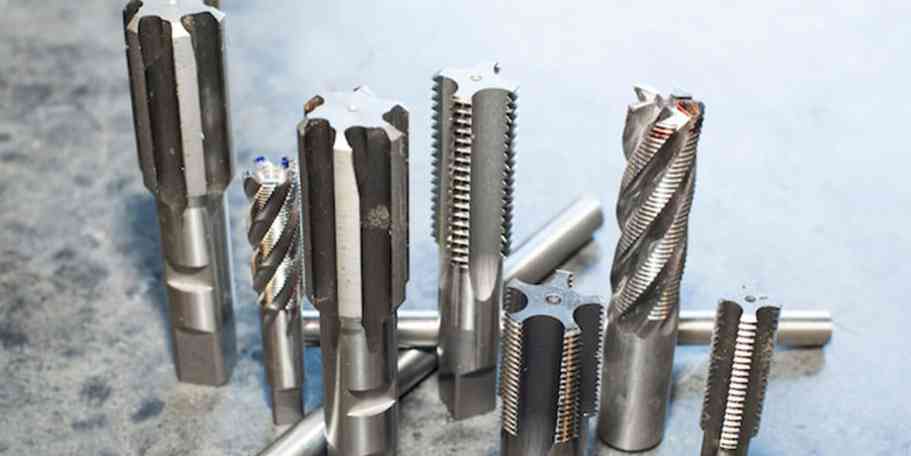
4. High-Speed Tool Steel
High-Speed tool steel contains many elements, including 0.6% carbon, 3-5% chromium, and 14-18% tungsten. Furthermore, the invention of this category of tool steel is partly responsible for ushering in the era of modern production. Before the invention of high-speed tool steels, when cutting tools and machines worked for long periods, their efficiency decreased due to friction. However, with this tool steel, cutting tools and edges keep working efficiently, performing at optimal speeds.
Common applications of high-speed tool steel include the production of power-saw blades, milling cutters, router bits, gear cutters, and drill bits. The M2 high-speed tool steel is the most common in this category.
5. Shock Resisting Tool Steel or S Grade Steel
Developed to have high-level impact resistance, shock-resisting tool steels are remarkably strong. Furthermore, this tool steel’s strength is due to its high toughness value and low carbon content. This tool steel category contains alloying elements found in other categories, as well as 0.15-3% silicon.
Although this steel does not have optimal abrasion resistance, it has excellent resistance to shock regardless of temperature. Besides, these properties make S-grade tool steels ideal for producing jackhammer parts, blacksmith chisels, and clutch parts.
In addition, its other applications include hot stamps, pneumatic tools, chipper knives, cold and hot working chisels, hot forming dies, and cold gripper dies. The S7 tool steel is the most popular in this category.
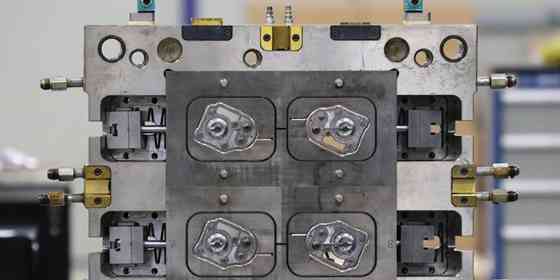
6. Plastic Mold or Special Purpose Tool Steels
These are tool steels like an excellent mix of toughness, corrosion, hardness, and resistance to wear and tear. Furthermore, tool steel under this category also has high impact strength and is easy to polish.
Besides, plastic mold tool steels are ideal for companies that use the processes of extrusion and injection molding to produce plastic. Using this tool steel for making molds ensures tool durability and reliability.
Also, they are tool steels created for special purposes. Like the water-hardened tool steel, these ones are water-quenched. Tool steels in this category contain high-iron steels, while other alloying elements are either absent or present in minute quantities. Adding other alloying elements sparingly helps improve the mechanical properties of this tool steel while ensuring it is not as expensive as other tool steels.
An instance of special-purpose tool steels is the low-carbon mold steels used in thermoplastic molding. This specially crafted mold steel does not require high impact resistance but excellent wear resistance and heat tolerance. In common, the P20 is the most popular used tool steel in this category.
Tool Steel Properties
This tool steel grades chart contains the most common tool steels and their comparative properties.
| Type | Comparative Properties |
| O1 | This is one of the tool steel grades with high dimensional stability during hardening. Its hardness response at low temperatures is also optimal. It has a maximum HRC of 65. |
| W1 | This water-hardened tool steel, also known as commercial carbon, is ideal for use in situations where simple heat treatment is best. It has excellent wear resistance and good toughness. It has a maximum HRC of 68. |
| A2 | It has higher heat resistance and wear resistance than O1. It has a maximum HRC of 63, with fewer distortions. It has excellent abrasion as well as wear resistance. |
| D2 | With superior toughness and wear resistance, this tool steel type has a maximum HRC of 65. It is, however, difficult to machine. |
| S7 | This shock-resistant tool steel has high strength and ductility but average abrasion and wear resistance. It has a maximum HRC of 61. |
| P20 | This special type of tool steel has a maximum HRC of 32. It is ideal for machining die-casting components and plastic molds |
| H13 | This Hot work tool steel has good wear resistance and hardenability. It also has a high resistance to thermal fatigue cracking. It has a maximum HRC of 54 |
| M2 | With a maximum HRC of 65, this high-speed tool steel has excellent abrasion resistance and toughness. |
Considerations When Choosing a Tool Steel Grade Machining
The tool or product you want to machine plays a huge role in the tool steel types you should choose. Besides, steel grades have different properties that make them ideal for different applications and uses. When choosing a grade for machining tool steel, here are some properties to consider.
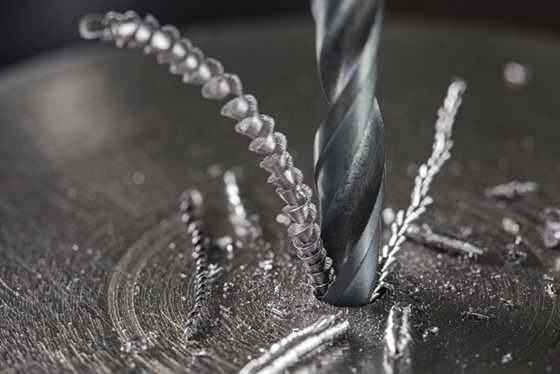
Tool Steel Properties
There are different grades of tool steel available for metal machining. Furthermore, they differ from each other based on their chemical composition, temperature range, as well as type of hardening.
However, the ideal tool steel grades for machining include cold working steels like O1, D2, and A2 and high-speed steel tools like M2. Although O1 has a high hardness, it has good machinability. This grade of steel is ideal for machining cutting tools and drills.
D2 also has good machinability due to its high carbon and chromium content. It has good toughness and Its resistance to wear makes it ideal for machining tools that should last long.
Additionally, the A2 tool steel has a good balance of toughness and wear resistance. It also has good machinability. This tool steel is ideal for forming punches, injection molding dies, and trimming dies.
Speed Levels
Not all tool steels perform optimally under high-speed levels. Using the wrong tool grade for machining would decrease tool steel hardness and wear resistance with time. So, if you would utilize tool steel under fast movement, it is best to fabricate the tool using high-speed tool steel. The reason is that they have a higher resistance to wear and extreme temperatures, even at high speeds.
Cost of Tool Steel
Cost is an important factor to consider when choosing a tool steel grade for CNC steel machining. However, it is always best to avoid cutting corners on the choice of material since you might spend more if the tool fails prematurely.
So, before committing to a particular tool steel grade for machining, it is best to undertake a cost-benefit analysis. This analysis would ensure the chosen material is suitable enough to yield the required performance.
What is The Difference Between Tool Steel and Stainless Steel?
Although they are both steel alloys, stainless steel, and tool steel differ from each other in composition, properties, and application. Here are the differences between these two types of steel.
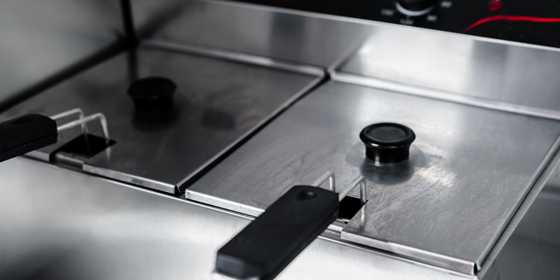
Tool Steel vs. Stainless Steel: Properties
Both stainless steel and tool steel differ in properties. This difference is due to the variation in their constituent elements. Chemically, tool steel is a carbon alloy with other alloying elements which include tungsten, chromium, molybdenum, and vanadium.
For instance, due to the presence of carbides in tool steel, it is extremely durable, machinable, and resistant to wear and tear. Generally, tool steels are tougher with better tensile strength than stainless steel. This makes them ideal for producing heavy-duty cutting tools. On the downside, the lack of or decreased chromium content makes this steel prone to corrosion.
In addition, stainless steel is a chromium-nickel alloy with nickel, nitrogen, titanium, sulfur, molybdenum, and silicon as other alloying elements. It has a high rust and corrosion resistance due to the presence of chromium. What’s more, it usually has a smooth, brilliant, and lustrous surface.
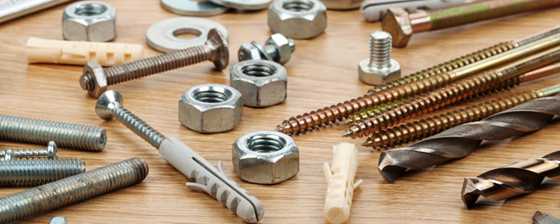
Tool Steel vs. Stainless Steel: Applications
Manufacturers use tool steel primarily for making tools. It has applications in tools such as drills, hammers, saws, and other cutting tools, basic tools used within the workshop. Manufacturers make tools in this category for manufacturing and fabrication, with little to no care for appearance and hygiene. Instead, the focus is on toughness and resistance to wear and tear, attributes that would improve such tools’ efficiency while reducing their maintenance and replacement rate.
On the other hand, Stainless steel has applications across a wide range of industries. Its resistance to corrosion and lustrous appearance make it ideal for use in architecture and other outdoor installations where exposure to environmental factors is certain. Steel in this category is also hygienic and easy to clean and maintain, making it ideal for use in the food and medical industry. For instance, it has applications in manufacturing kitchen utensils and medical tools like speculums, needles, bone saws, and scalpels.
Get High Quality Tool Steel Parts at WayKen
As a reliable and reputable manufacturer, WayKen specializes in different manufacturing processes, including CNC machining, 3d printing, rapid tooling, surface finishing, etc. No matter you require machining tool steel or steel molding services, we can all meet your needs.
What’s more, if you are not sure what tool steel grade is ideal for your product? Not to worry, we have a team of professionals and engineers to ensure you select the right steel materials for the best results. Feel free to contact us for a quote or any other questions you might have.
Conclusion
Tool steel is a carbon alloy with diverse uses, and it has different categories based on the percentage of other alloying elements, type of quenching, and temperature range. Choosing the right tool steel grades for your project often spells the difference between a successful and a failed tool.
FAQs
Why does tool steel fail?
Tool steel fails mostly due to heat-treatment problems and failure to understand the tool steel properties. This results in failures in the form of chipping, plastic deformation, cracking, etc.
What makes tool steel ideal for use in machining?
Tool steel is ideal for machining due to its beneficial properties like abrasion and deformation resistance, hardness, and ability to retain a cutting edge regardless of increased temperatures.
Can you mill tool steel?
Yes, you can mill tool steel. However, the process used for milling tool steel differs from that used for normal milling operations.
What is the hardest tool steel?
The hardest tool steels are those with a high vanadium content. The tool steel category with the highest percentage of vanadium is the cold working tool steel, which has excellent wear resistance.

